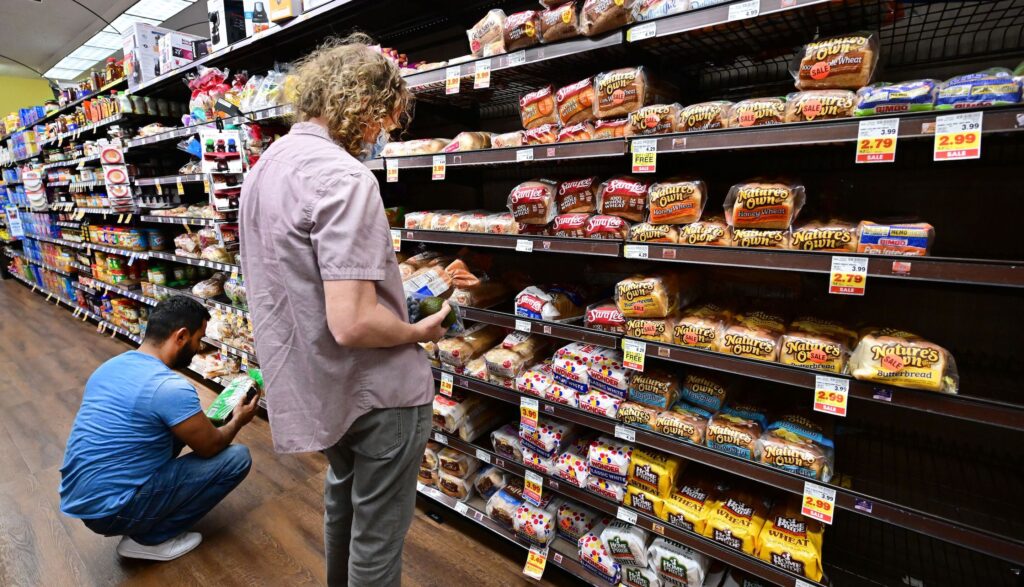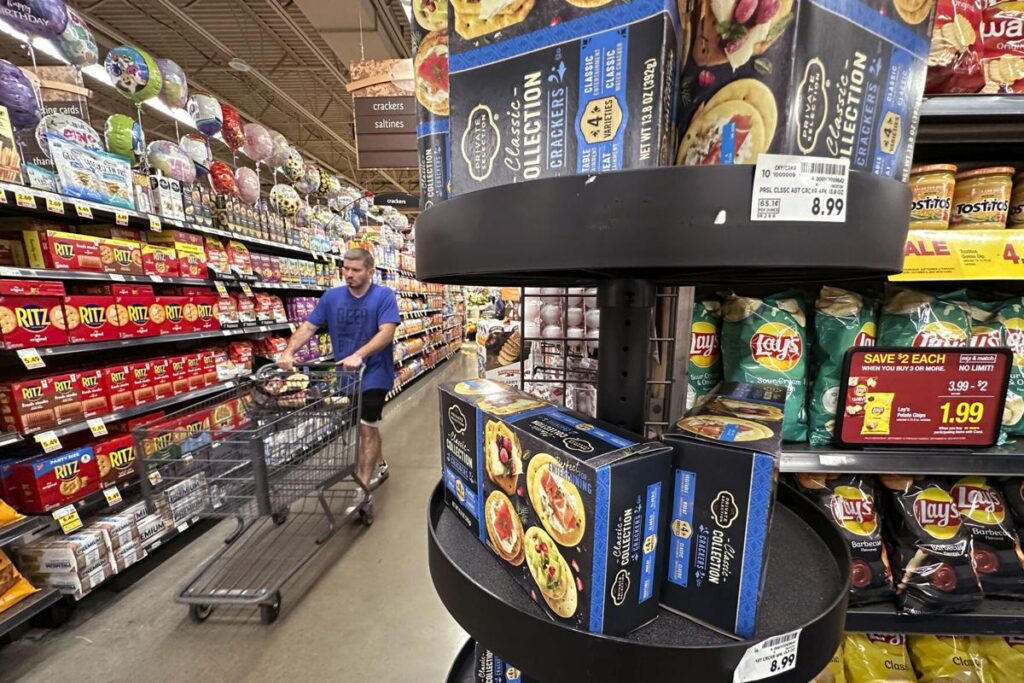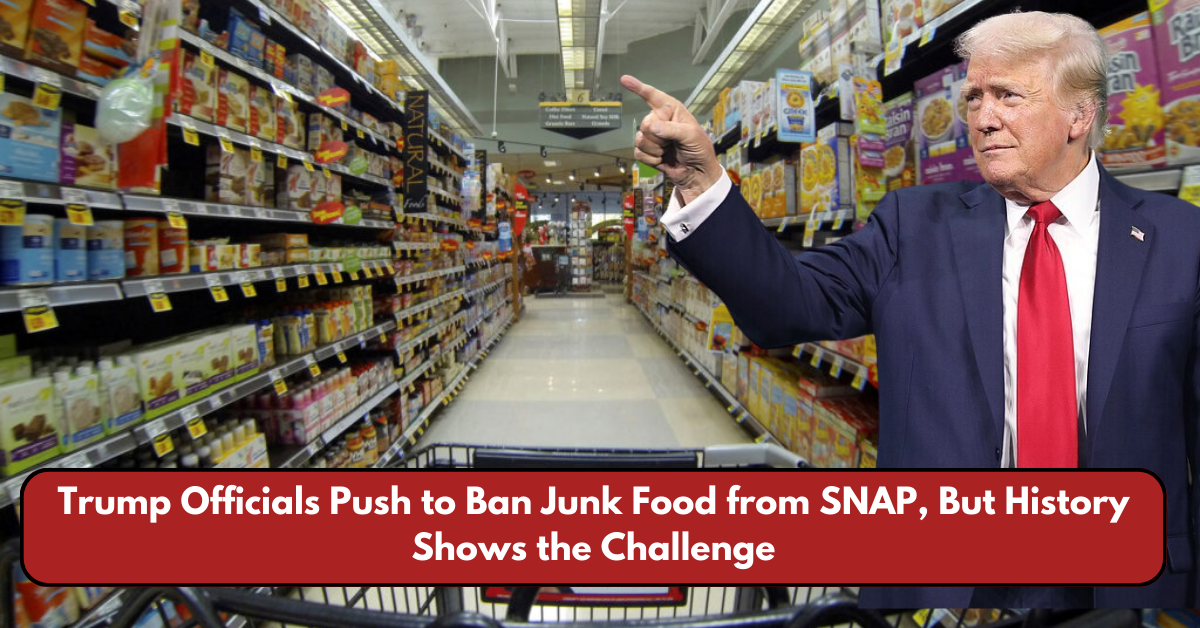The Trump administration is pushing to ban the purchase of junk food, including sugary drinks and processed snacks, under the Supplemental Nutrition Assistance Program (SNAP). While the proposal aims to encourage healthier eating habits among low-income families, past efforts to implement similar restrictions have faced significant obstacles.
The Push for Healthier SNAP Purchases
Health and Human Services Secretary Robert F. Kennedy Jr. and Agriculture Secretary Brooke Rollins are leading the charge to impose new restrictions on SNAP purchases. They argue that taxpayer money should not subsidize unhealthy eating habits that contribute to obesity, diabetes, and other diet-related illnesses. The proposal suggests eliminating sugary sodas, candy, and highly processed snack foods from the list of eligible items under SNAP.
“If we are going to provide assistance to Americans in need, it should be for food that promotes health and well-being,” Kennedy said in a recent statement.
Historical Challenges to Restricting SNAP Purchases
Despite multiple attempts over the years, efforts to restrict specific food items from SNAP have been met with resistance. The 2008 Food and Nutrition Act currently governs the program, allowing recipients to purchase nearly any food product meant for human consumption, except for alcohol, tobacco, and hot prepared foods. Any significant change to SNAP rules would require legislative approval or state waivers granted by the U.S. Department of Agriculture (USDA).
Several states, including New York and Minnesota, have previously sought waivers to exclude sugary drinks from SNAP, but those requests were denied. The USDA has historically cited implementation difficulties and concerns about singling out SNAP users compared to the general population.
For more details on SNAP regulations, visit the USDA’s official SNAP page: www.fns.usda.gov/snap.
The Debate Over Food Choice and Autonomy

Critics argue that restricting food choices within SNAP would stigmatize recipients and impose government control over personal dietary decisions. Research shows that SNAP recipients’ purchasing habits largely mirror those of other low-income Americans. According to a study by the USDA, sugary drinks and snacks account for a similar percentage of total food purchases among both SNAP users and non-recipients.
“Policymakers should focus on expanding access to fresh, affordable produce rather than limiting choices for those in need,” said Stacy Dean, a policy expert at the Center on Budget and Policy Priorities.
Opponents also argue that restrictions could disproportionately affect rural communities, where access to healthy food options is already limited. Instead of bans, they suggest increasing incentives for healthier purchases, such as expanding the USDA’s Double Up Food Bucks program, which matches SNAP dollars spent on fruits and vegetables. Learn more about this initiative here: www.doubleupamerica.org.
Industry Pushback and Lobbying Efforts
The food and beverage industry has long resisted efforts to limit SNAP purchases. Companies like Coca-Cola and PepsiCo, which generate significant revenue from low-income consumers, have actively lobbied against such measures. Industry groups argue that instead of banning certain products, the government should support educational programs that promote healthier choices.
A representative from the American Beverage Association stated, “We believe in providing consumers with options, including low-calorie and sugar-free beverages, rather than imposing restrictions that limit freedom of choice.”
The Road Ahead for SNAP Reform

Despite strong opposition, discussions on SNAP food restrictions continue at both federal and state levels. If the Trump administration moves forward with this policy, it will likely face legal and political hurdles similar to those seen in past attempts. While there is broad agreement on the need to address diet-related health issues, the debate remains centered on how best to achieve that goal within the framework of a government assistance program.
As policymakers weigh their options, the question remains: Should the government regulate what low-income Americans can eat, or should efforts focus on education and access to healthier foods? With millions of Americans relying on SNAP benefits, the outcome of this debate will have far-reaching implications.
For the latest updates on SNAP policy changes, visit the USDA’s newsroom: www.usda.gov/media/newsroom.
This article has been carefully fact-checked by our editorial team to ensure accuracy and eliminate any misleading information. We are committed to maintaining the highest standards of integrity in our content.

Premlata is a seasoned finance writer with a keen eye for unraveling complex global financial systems. From government benefits to energy rebates and recruitment trends, she empowers readers with actionable insights and clarity. When she’s not crafting impactful articles, you can find her sharing her expertise on LinkedIn or connecting via email at [email protected].




